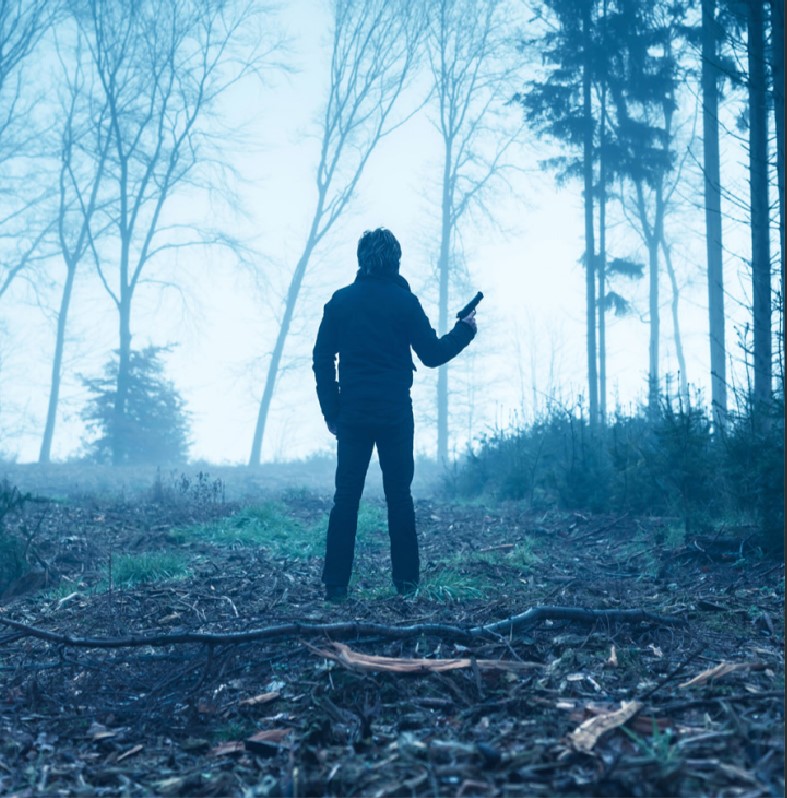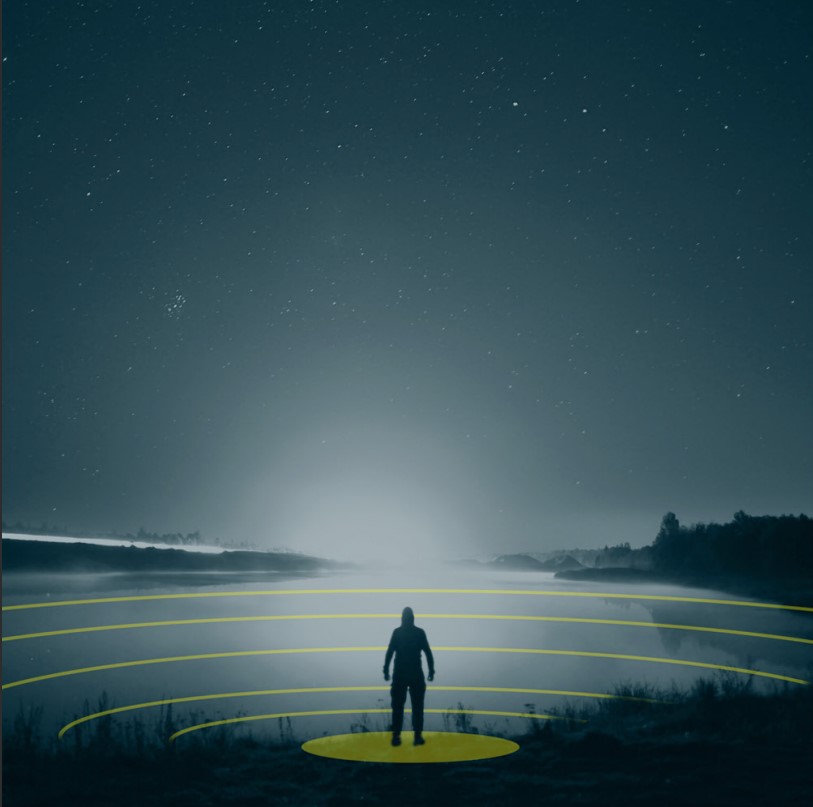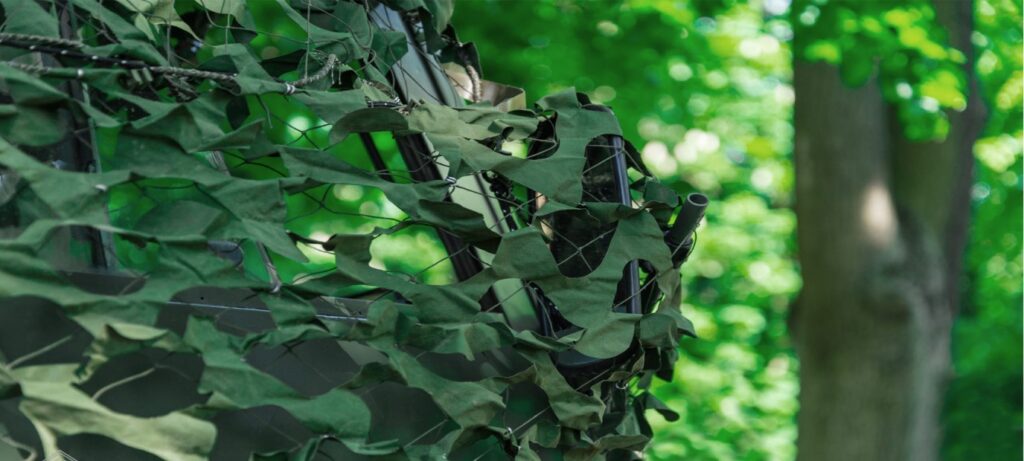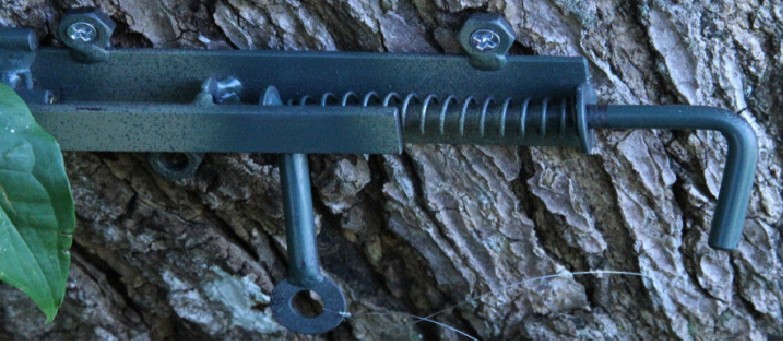Situation
You or a group are on the run in an area not considered to be secure. You need to hole up overnight or until the heat is off. What are you looking for in terms of good protection, cover, concealment, shelter, terrain? How do you set in and set up security?

Security on the Trail and Road
Camp security begin on the trail long before you ever get to your hole-up site.
Lines of Drift
Lines of drift are roads, railroad tracks, fence lines, ridges, rivers, bridges, washes, and mountain valleys. They are the lines that guide people and animals along the path of least resistance. Lines of drift are also the most effective location to ambush you or look for your tracks, so staying off them will help keep you both undetected and alive.
When foot travel is not an option, survivalists must weigh the risk of using roads and trails. Vehicles use roads, so traveling by vehicle through hostile territory is dangerous, even for the world’s most powerful militaries. Therefore, the survivalist must carefully weigh the additional time, work, and supplies it takes to travel cross country on foot against the danger of traveling along lines of drift. Few situations are more dangerous than driving or walking into a coordinated ambush.
Noise, Light, and Scent Discipline
The human voice carries farther than you might think, especially on still nights, across water or in the desert. Under ideal conditions, the human voice can be heard for miles. Learn to communicate with hand signs, by touch signals or approach the person you are talking to and whisper in their ear.
Light and movement attract the human eye. Move slowly and at night or in windy conditions. Use tritium compasses and when you need to reference a map, use as little light as possible, do it on the ground, and underneath a poncho to block the light and hide it.
When traveling by vehicle, light discipline means traveling by night, blacked out, using night vision.
No smoking on the trail. Just having cigarette smoke on your clothing will alert anybody with a decent nose to your presence and direction. Wonder why chewing tobacco is so popular with soldiers and cowboys? Now you know.
With a dog, a smoker is a cinch to track, but so is someone with body odor or a guy who wears his lunch on his shirt. Maintain good hygiene on the trail and use only scentless products designed for hunters. That means forgoing wet wipes, deodorant, soap, shampoo, laundry detergent, aftershave and fabric softener.

Counter-Tracking
Another way to find you is by your tracks. If you are traveling by vehicle, any hunting parties will be looking at the side of the road for signs such as footprints and tire tracks to locate your camp. They may even create track traps by smoothing the dirt along the shoulder or even the entire road so they only have to read one set of tracks, and they will be easy to see. This is usually done by dragging carpet or tires behind the vehicle. Pay special attention to areas where you leave the road, whether asphalt or dirt, and leave it as you found it.
Take steps to minimize the signs you leave by choosing your trail carefully. Where possible, walk over rocky or hard-packed ground that increases the difficulty of tracking. Whether on foot or in a vehicle, timing travel with inclement weather will help mask signs of passage by obliterating tracks with wind and rain or covering them with snow.
Cat’s paws are felt soles that can be strapped over your boots to change and diminish tracks. I also carry a small vial of weapons-grade OC powder in my E&E (emergency and evacuation) gear to slow down dogs.
Finding an Effective Hole-Up Site
The best hole-up sites are with friends, family, or members of groups you belong where your friends can aid you and watch your back. That’s how the various Apache bands evaded the US Army during nearly 90 years of guerrilla warfare. They knew a place to run to in every direction, cached supplies, and stayed with aunts and uncles and cousins from Utah to Mexico, embarrassing the US Army time and again. When these aren’t available, here are some tips:
Wilderness – Use the J-Hook
When you find an area that looks like a promising hole-up site, walk well past it and then circle back to it in a “J” pattern. This forces anyone following your trail to walk past your hole-up site. This allows you to spot them and either flee or ambush them from behind cover. Use this technique any time you stop to eat or sleep.
Cover and Concealment
Ideally, camp or hole-up sites should provide both cover and concealment. Cover means they stop small arms fire, like a rock pile or sandbags. Concealment means they hide you from view, like small trees and bushes.
Urban Hole-Up Sites
Consider hotels, hostels, campgrounds, and shelters where available. I have stayed in many such places. Those designed around students, backpackers, and the homeless often have free lockers so you can stow your gear, which is important when you are alone. I stayed in a Red Cross Shelter as part of a training exercise and used a cable lock to lock my pack to stationary objects while I showered and ate. I also use it to lock my solar panel to my tent while camping. Security bags and backpacks use a locking net of cables to prevent theft in urban environments.
If the above is not an option, learn from the locals. Every city has a homeless population that has already scoped out the city for good hole-up sites. By observing them and talking to them, you’ll find the best spots to blend in under the radar.

Hiding Vehicles
In urban environments, the easiest way to hide a vehicle is to put it in a storage unit or garage. In the wilderness, it requires finding a remote spot with thick cover and suspending camouflage netting.
Pay attention to your tire tracks because they can lead others to you. Cover glass and reflective surfaces. Don’t lay the netting directly on the vehicle. Use spreaders, lines, and stakes to hang the netting off the vehicle’s body, so it shades it. Depending on the color, you may want to cover the vehicle with camouflage tarps and then also erect netting. Once you erect the netting, veg it up with local bushes and branches to break up the outline and hide it.
Establishing Security
The camp requires the same noise and light discipline as the trail.
Circle the Wagons
Use your vehicles as cover for your camp or use them as bait and camp away from them. Where possible, place fighting positions to provide grazing fire (parallel to the ground & no more than a meter off the ground) and give them overlapping fields of fire (so more than one weapon covers the same ground).
Exits
One thing all hole-up sites should have in common is an escape plan. Wilderness sites should have escape routes. Urban sites should have rat lines. Make new exits, other than the doors and windows, where you wouldn’t be expected to exit the building, and then hide them.
Post a Watch
If you’re not alone, post a watch. If you are alone, you’ll have to rely on perimeter alarms.
Perimeter Alarms
Place motion detectors or tripwires on the J-hook into your hole-up site and along nearby lines of drift to use them to your advantage. If you have the manpower or the time, use area denial tactics to channel the enemy into kill boxes. This can be done either with barbed wire or natural obstacles.

One infamous old West bounty hunter, tracker, and lawman trained a small dog to wake him by licking his face instead of barking when others approached to ensure he wouldn’t be taken by surprise on the trail.
Cook and Sleep in Different Places
Cooking tends to create smells, noise, and light, making it easier to find you. Camping like you are in bear country will help throw off both four and two-legged predators. Cook meals that require it in one spot and then move on a distance before you make camp and sleep.
This article was written by Cache Valley Prepper and originally published in Survival Dispatch Insider Volume 4 Issue 3.
